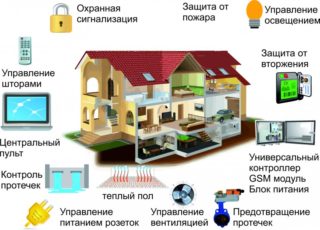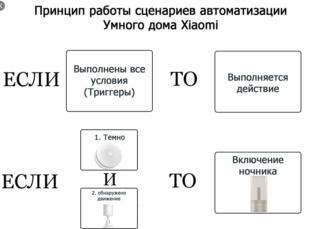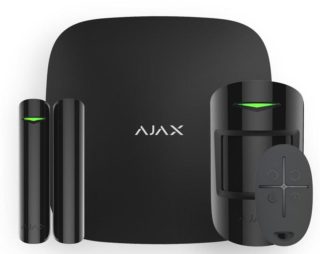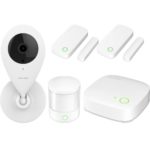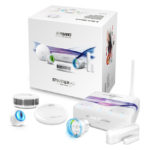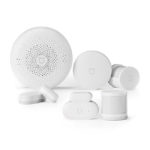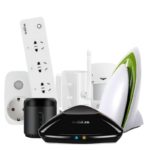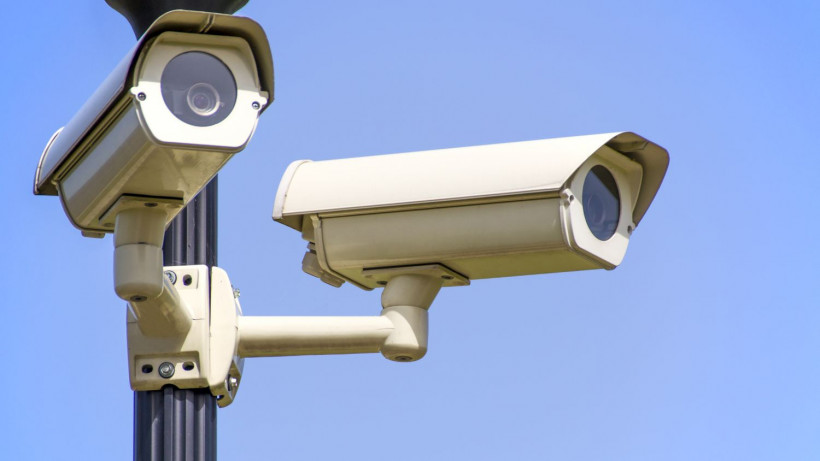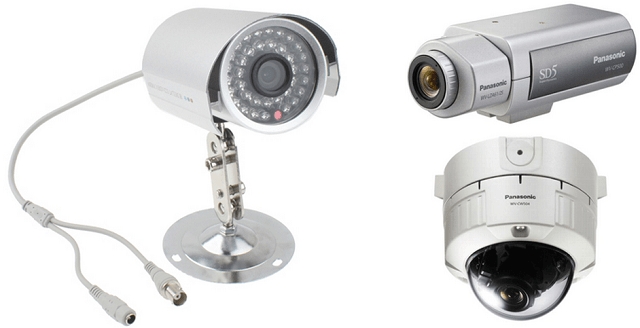The smart home concept is designed to provide comfort, safety and resource conservation for residents. "Smart home" analyzes situations and reacts to them. Automation of the process makes it possible to independently control devices without external influences. Air conditioning, heating and other engineering systems work well. Internal and external factors influencing the beginning or termination of functions are monitored.
- Device and principle of operation
- System components
- Types of smart home
- Wired
- Wireless
- Programmable controllers
- Smart home functions
- Safety and security
- Microclimate control
- Services on request
- Media center
- Flexible management and use of scripts
- Extensibility
- Recommendations for self-assembly of the "smart home"
- Manufacturers rating
Device and principle of operation
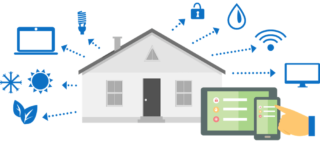
Intelligent control is based on the automated management of the functions of life-support systems. In large buildings, more than a dozen engineering communications are allocated, the work of which is controlled.
The most commonly used management levels are:
- The top level is represented by administration and dispatching. Control and interaction of a person with the technique takes place through an interface base, implemented in the form of computer tools.
- The middle span controls workflows. Automation coordinates the state with the help of controllers, switching equipment, modular nodes for output and input of information.
- The lower tier includes terminal units. This includes detectors, executing devices, cable lines for transmitting information by levels.
The “smart home” system is divided into automatic control of industrial complexes and home communications coordination schemes.
System components
Life support components are linked in a diagram:
- management and communication;
- ventilation, heating, air conditioning;
- lighting;
- power supply;
- monitoring and security;
- mechanization (raising barriers, opening gates, heating double-glazed windows, steps).
Power supply systems include installations for turning on and off lighting, tracking sensors, remote control with sockets, toggle switches. This includes optimized redundant function input modules, emergency power supplies.
Types of smart home
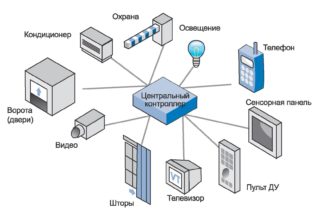
A distinction is made between centralized and decentralized management modes.
The centralized smart home system works according to the principle of programming for a node element or logical node. He often acts as a controller with output contacts. A description of the program for coordinating the functions of controllers and executive devices is given under the object. Using a single interface, multitasking plans are applied with the input of equipment types.
The decentralized order is powered by an executive module containing an embedded microprocessor. The reliability of this mode lies in the non-volatile memory block. In the circuit, each detector or other device operates autonomously. The advantage is that the failure of one device does not affect the functionality of adjacent elements and technologies.
Wired
The control modules are connected to a single cable bus, through which they send and receive commands, interact with the elements of the board. The wire is a coaxial cable or twisted pair. Wired communication is more reliable than wireless technology.
The speed of information transfer is high and does not cause discomfort for residents. For wired transmission, there is a choice of control elements with different functionality, design and a variety of connecting circuits. The cable network allows organizing complex scenarios of interaction between control, monitoring and executive components.
Attention is paid to a clear layout of the modules and the quality of the wiring. After finishing the room, it is impossible to move the elements, a poor-quality cable will damage the components.
Wireless
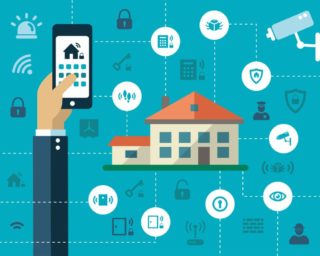
Commands are transmitted via radio signals, the absence of wires saves space, installation time, and material resources. The plus is that the system is installed in the country, in a house or apartment after finishing and does not require an additional cable. Battery-operated switches can be installed anywhere.
There is no project for the wireless smart home. In wooden buildings, the weak ability of wood to transmit radio signals is taken into account. There are enough wireless low-cost smart home circuits on the market that perform basic functions and provide user comfort.
Minus - depending on the quality of the connection and the need for regular replacement of nutrients. In the mode, transmitters are used that receive energy from the electrical network, for them a wire with zero is pulled.
Programmable controllers
The technical controller controls the processes. Programmable module means a logical node whose functional program is defined by the user. Industrial models differ from domestic ones in efficient work and reliability.
Programmable relays are used with fewer intended tasks, are cheaper and easier to configure. The advantages of using programmable assistants in the house with intelligence are that they organize the interaction of several subsystems, despite the complexity of setting up. The modern smart home works efficiently from the central control.
Programmable controllers work only from the wired bus, because a sudden shutdown of the device will lead to unexpected consequences.
Smart home functions
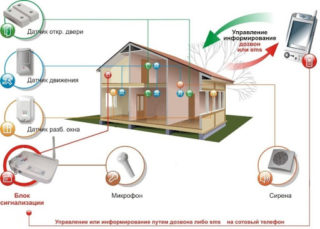
Intelligent automation is an ordered system of nodes and modules that perform daily tasks without human involvement. The user presets the operating mode depending on the needs. Flexible mode allows you to choose the required functionality or change it over time.
The set of techniques includes turning on lighting, adjusting heating and air conditioning, and ensuring security. Automation will notify the owner of an intrusion, report flooding or the appearance of smoke. The "smart house" system solves scenarios in which the dependence of various functions and the coordination of entertainment, home theater, pool heating at specified hours and days are assumed.
Safety and security
Security measures include fixing unwanted break-ins or intrusions into the home and notify the owners. It provides for the activation of a sound signal, the start of shooting and the locking of the entrance and intermediate doors. The systems integrate with the security units and transmit the alarm to expel the group.
The security scheme includes technologies:
- video surveillance;
- controlling access to the house and individual rooms;
- burglar alarm, fire and gas leakage control;
- remote notification of incidents in the home, telephone control;
- imitating the presence of a person in the house.
The security system includes vibration sensors, broken glass, smoke detectors, opening openings. Video eyes, electric locks, sirens are used.
Microclimate control
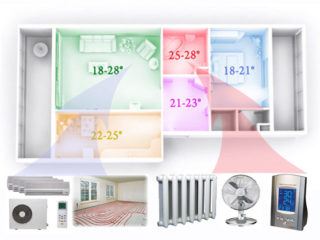
Coordinating the quality of the microclimate means regulating the air temperature, ventilating the room, maintaining humidity at a level of 40 - 60%. The devices save energy resources due to the rational use of an already heated environment.
The device uses thermostats and sensors:
- humidity;
- temperature;
- climate.
Intelligent equipment includes humidifiers, air ozonizers, atmosphere purifiers if the parameters are not matched. Automation reduces the power of the heating boiler while the owner is absent, opens the vents and transoms to supply fresh air flow.
Services on request
The problem of the safety and security of information depends on the types of devices used. The risk of burglary increases with increasing potential consequences. For home automation, the risks are significantly lower than for industrial or medical systems.
The manufacturers of each platform create their own utilities at the request of the user, which do not allow the software to contact a single network and modules from other manufacturers. An example is proprietary software with a locked code, where utilities do not link with models of other manufacturers in any way.
In second place is the need to create devices that can freely work with standards. Sometimes communication requires a hub that standardizes signals of different orientations.
Media center
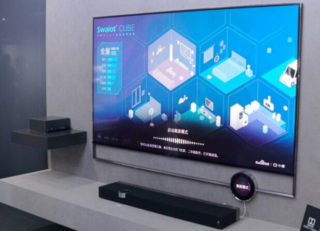
It is a remote computer without keyboard and mouse with built-in wireless interface. A plasma TV and a projector are used as a monitor. TV tuners of media centers have wide capabilities for processing pictures and sound signals. They digitize and compress analog signals.
After conversion, the wave bursts are edited and recorded on the hard disk. The built-in radio absorber receives air radio signals, sound plates ensure the quality of mechanical vibrations. The advantage of the media center is that it is rationally applied to the base frame in the control system. Expanded functionality allows you to coordinate the actions of other digital equipment and technology in the smart home.
Flexible management and use of scripts
Device functions for scenarios:
- the gateway (hub) coordinates control modules, receives data from detectors, signal sensors and transmits signals to switches;
- the socket executes the command for supplying electricity, controls the metering;
- the opening sensor closes and opens the contact;
- the wireless key transmits commands.
Devices that work according to the chosen protocol consume less electricity and can operate on removable sources for up to 2 years. Continuous online mode must be provided for outlets, sensors, repeaters for transmitting signals, and control is carried out over a local circuit.
Extensibility
Modularity and extensibility allow for the creation of a new set of devices in the future and the addition of other components to the system. The need arises with increased needs, therefore there is an alternative to a complete replacement of the system in that controls or performance elements are added.
Expandability makes it possible to start the installation of automatic control with a small set of functions that are needed in a certain period of time, and gradually install a new type of equipment.
Recommendations for self-assembly of the "smart home"
Self-assembly of the system will reduce the cost of equipping the house with automation. Not all people can do this kind of work. it is necessary:
- be able to use tools and work with electrical appliances;
- know the basics of safety;
- have initial knowledge of programming, be able to make a graphical interface for control;
- know the basics of the structure of automatic circuits and be able to apply algorithms.
First, the direction of use is determined, a technical version is found. The premises are surveyed, and a project for the placement of elements is being developed. Simple smart response circuits are recommended for DIY installation.
Manufacturers rating
The Chinese BroadLink system is a set of digital modules for sustainable living at home. Elements can interact or work autonomously, does not require a main controller. A variety of sensors, tracking devices, detectors and regulators are provided.
The Polish installation Fibaro presents professional home security equipment through automation. The system is distinguished by the ability to develop many scenarios with an economical level of functioning. The equipment is installed by professional workers only.
The Chinese Orvibo system introduces an inexpensive set of safety equipment. Air, heating control is a second order function. The kit is easy to install, controlled remotely via a smartphone (10 numbers). Works in wireless and cable versions.
Chinese equipment Xiaomi belongs to the budget category. The system is completely autonomous, has the ability to connect modules and nodes in the future. The disadvantages include a small coverage area, a small number of executive components and sensors.

